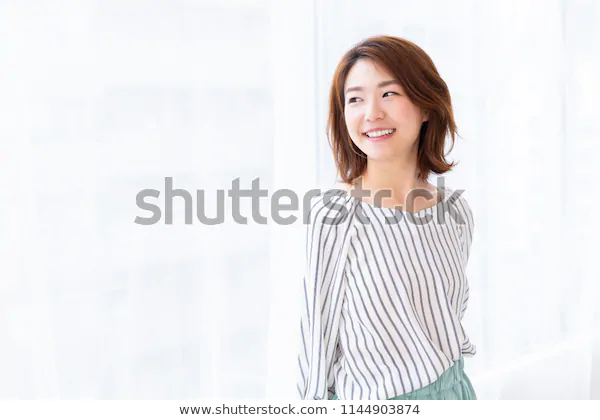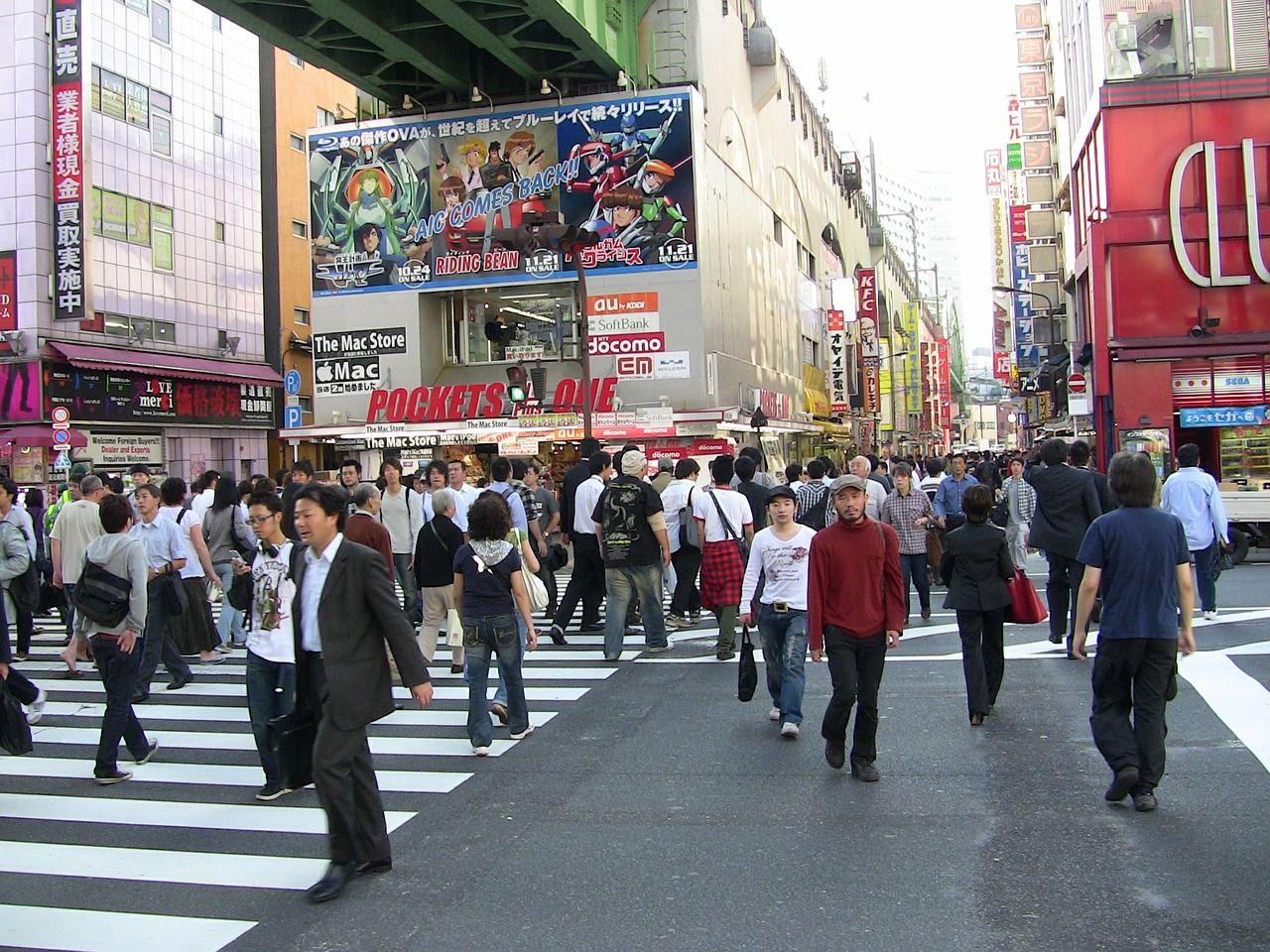Katelyn Lien
C
chloe
AP Japanese 🇯🇵
28 resourcesSee Units
The values of simplicity and quiet beauty in nature are reflected in beauty standards among Japanese people. When compared to beauty standards in communities like the US, some ideals are quite different and may be surprising!
Beauty in Japan
In Japan, shiroi hada (白い肌) or pale/light skin is regarded as very beautiful. Skin that is smooth with no blemishes is considered the prettiest. In the summer, it is common to see people wearing garments covering their whole arms or using umbrellas to shield their bodies from the scorching sun to avoid getting darker skin.
In contrast, people in the US seem to have the opposite standard. In the summer, people go out in the sun as much as possible to tan or even go to tanning beds to make their skin appear darker.
👃 A facial feature that many people seek is a high-bridged nose. Perhaps it is because high-bridged noses are not as common or because Western idols often have this defining facial feature.
鼻が高い人 is used to refer to a person who has a high-bridged nose.
Beauty is not just about one's appearance. A person's beauty also comes from their personality, how they treat others, and other aspects that may not be obvious at first glance. In Japanese culture, a polite and elegant woman is considered beautiful. Unlike in some Western cultures, Japanese people value more quiet and respectful people. People who are loud or talk too much, urusai hito (うるさい人), can be considered rude or inconsiderate of others.
In both Japanese and Western communities, people may have to go to extreme measures to conform to their own society's beauty standards. In all countries of the world, we must continue working on accepting everyone for who they are and not pressure them into feeling as if they need to fit a particular mold.
Music and Arts
🎵Music (音楽)
Japan has a rich and diverse musical heritage that reflects the country's cultural and historical traditions. From traditional court music such as gagaku, koto, and shakuhachi to contemporary J-Pop, Japanese music has evolved over centuries, adapting to new styles and influences while remaining deeply rooted in its traditional roots.
Gagaku music, dating back to the imperial courts of the Heian period, is characterized by its use of space and silence, creating a sense of contemplation and introspection that is unique to Japanese music. Other traditional instruments, such as the koto and shakuhachi, are known for their haunting and evocative sounds. They are often used in solo performances or small ensembles and have been passed down through generations.
J-Pop
J-Pop is a genre of popular music that originated in Japan in the 1990s. It is known for its catchy, upbeat melodies and often incorporates elements of electronic dance music. In recent years, Japan's music scene has become known for its vibrant and innovative styles. J-Pop has emerged as one of the most popular forms of contemporary Japanese music, featuring upbeat and catchy songs , with elaborate choreography and colorful costumes. J-Pop artists often perform high-energy choreography as part of their live shows, and their music videos are often visually elaborate and stylized. Other genres, such as indie rock, hip-hop, and techno, also have their own unique styles and subcultures, with many artists incorporating traditional Japanese music into their work. Japanese music has a long and rich history that has continued to evolve and adapt, creating a vibrant and exciting music scene that is unique to Japan.
Key Music Words:
- Ongaku (音楽): music
- Kyoku (曲): song
- Kashu (歌手): singer
- Kashi (歌詞): lyrics
Visual and Performing Arts
The visual and performing arts are an important part of Japan's cultural heritage, and have played a significant role in shaping the country's artistic traditions.
Ukiyo-e
Ukiyo-e is a traditional Japanese woodblock printing technique used to produce vibrant and colorful prints. The process typically involves a team of artisans including the artist, block cutter, printer, and publisher.
The artist first creates a design, which is then carved into a block of wood by a block cutter. The printer then inks the block and prints the image onto paper, with multiple blocks used to produce different colors. The final product is a beautiful and intricate print that captures the essence of traditional Japanese art and culture.
Today, ukiyo-e prints are considered an important part of Japanese cultural heritage and continue to be studied and collected around the world.
✉️ Origami (折り紙)
Origami is the art of paper folding. This traditional Japanese form of art was created during the Edo Period, and special techniques have been passed down for many generations.
The word "origami" is derived from the Japanese words "ori" meaning "to fold" and "kami" meaning "paper". The practice involves transforming a flat sheet of paper into a finished sculpture by folding and creasing the paper in specific ways. Origami can range from simple shapes to highly intricate designs, and the art has been applied to various fields such as architecture, engineering, and science. It requires patience, precision, and creativity to master the skill of origami.
🖊️ Calligraphy (習字)
Calligraphy is a creative art form in which beauty is expressed through kanji and kana characters. Early Japanese calligraphy originated from Chinese calligraphy and is called shodō (書道), which literally translates to "way of writing."
Now, Japan has its own writing system with kanji, hiragana, and katakana, and calligraphers have developed styles unique to Japan. This type of calligraphy is called shūji (習字) .
習字 requires a number of tools. The most important tools are the fude (筆), which is the brush and the sumi (菫) or ink. Japanese calligraphers also use hanshi (半紙), which is a special kind of thin paper. Some people like to put a shitajiki (下敷き) under their 半紙 to prevent ink from bleeding through.
In Japanese calligraphy, each brush stroke holds significance. Strokes can be soft or firm, thick or fine, and the direction in which they are written is very important.
Calligraphy is taught in school. Students bring their own 筆 and 菫 to class and practice their 習字. Some students even practice 習字 on their own and go to an after-school class.
Kabuki
Kabuki is a form of traditional Japanese theatre that has been around since the early 17th century. The plays performed in kabuki often revolve around historical events, famous samurai stories, or folk tales.
The actors in kabuki, also known as kabuki-za, are primarily male, with male actors playing the female roles. Live music, featuring traditional instruments such as drums, shamisen, and flutes, is an important part of kabuki performances.
Kabuki also features elaborate costumes and makeup, and the stage itself is a key element of the performance, featuring complex trap doors, lifts, and rotating platforms. Kabuki remains an important cultural institution in Japan, with performances attended by people from around the world.
👘 Fashion and Design
In Japan, being well-dressed in public is important. Wearing proper clothing, yōfuku (洋服), and having a tidy appearance shows one's professionalism and ability to take proper care of themselves.
In contrast to some countries like the US, where people may leave their house in casual clothing like sweatpants or a sweatshirt, Japanese people rarely leave their house without changing into nicer clothes. Again, their main priority is to convey their politeness and a respectful tone through their appearance.
A typical outfit for a Japanese woman may include:
- nice shirt or blouse (ブラウス)
- long skirt (スカート) or pants (スボン)
- arm coverings (腕のカバー) in the summer
A woman's outfit for her job and for weekends may be similar.

Image Courtesy of shutterstock
A typical outfit for a Japanese man may include:
- suit (スーツ) when working
- comfortable shirt (シャツ)
- ズボン
👖 Japanese clothing is also often more conservative compared to other countries. Most women wear a long skirt or pants, called zubon (ズボン), even in the summer, and on the rare occasion that they do wear shorts, it will most likely not go above their knees.
🚲 While it is important for the clothes to look nice, they also must be comfortable. Many people walk or ride bikes to get to one place to another, rather than driving since Japan is a small country. Therefore, they must wear clothes that will allow for light physical activity.

Image Courtesy of needpix
A popular Japanese fashion brand is Uniqlo or ユニクロ. It was founded by Tadashi Yanai and has expanded across many international countries, or 外国. In the US, there are over 50 Uniqlo stores as of May 2020, and the brand has become more well-known recently due to its cheap prices and wide range of clothing items.
この洋服は安い! is something a person would say if they see a piece of clothing that is cheap.

Image Courtesy of Flickr
🔑 Key Words and Ideas
- A few features that are considered beautiful:
- pale/light skin
- high-bridged nose
- polite and more reserved personality
- Shiroi hada (白い肌): pale/light skin
- Hana ga takai hito (鼻が高い人): person with high-bridged nose
- Urusai hito (うるさい人): loud person
- Dressing nicely in public is important because it conveys professionalism and politeness
- Yōfuku (洋服): clothing
- Japanese clothing is more conservative than clothing from some Western countries
- ブラウス: blouse
- スカート: skirt
- ズボン: pants
- 腕のカバー: arm coverings
- スーツ: suit
- シャツ: shirt
- Uniqlo (ユニクロ): international Japanese clothing brand
- Gaikoku (外国): international country, foreign
Japanese visual and performing arts reveal Japanese people's appreciation for beauty and nature
- Haiku (俳句): traditional Japanese poetry with syllables arranged in 5-7-5 pattern
- Kigo (季語): seasonal word
- Shamisen (三味線): traditional Japanese instrument
- Bachi (ばち): pick used to play the shamisen
- Ikebana (生け花): art of arranging flowers
- Shin (真): longest length in ikebana and represents heaven
- Soe (副): medium length in ikebana and represents people
- Tai (体): shortest length in ikebana and represents earth
- Origami (折り紙): Japanese art of folding paper
- Manga (マンガ): Japanese graphic novels and cartoons
- Sazae-san (サザエさん): famous manga series about a large family
💥 Strive for a Five Vocabulary
- Tsurutsuru (ツルツル): smooth
- Bijin (美人): beautiful person
- Kabusu (かぶす): to cover
- Kasa (傘): umbrella
- Taiyō (太陽): sun
- Kijun (基準): standard
- Nagasode (長そで): long sleeve
- Natsu (夏): summer
- Yōfuku no omise (洋服のお店): clothing store
- Kaku (書く): to write
- Shiki (四季): four seasons
- Mijikai (短い): short
- Nagai (長い): long
- Shizuka na tokoro (静かな所): a quiet place
- Ongaku (音楽): music
- Kyoku (曲): song
- Kashu (歌手): singer
- Kashi (歌詞): lyrics
- Tengoku (天国): heaven
- Chikyū (地球): earth
- Kiru (切る): to cut
- Yomu (読む): to read
Browse Study Guides By Unit
👨👩👧Unit 1 – Families in Japan
🗣Unit 2 – Language & Culture in Japan
🎨Unit 3 – Beauty & Art in Japan
🔬Unit 4 – Science & Technology in Japan
🏠Unit 5 – Quality of Life in Japan
💸Unit 6 – Challenges in Japan
🧐Exam Skills
📚Study Tools

Fiveable
Resources
© 2025 Fiveable Inc. All rights reserved.